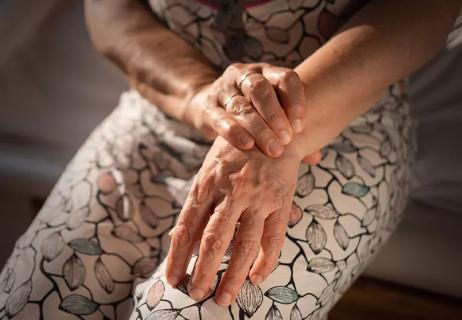Advertisement
When at-home treatment is not enough

If you live with arthritis pain, you’re probably familiar with at-home fixes such as ice and heat packs, stretching routines, pain relievers and simply putting your feet up and taking a break.
Advertisement
Cleveland Clinic is a non-profit academic medical center. Advertising on our site helps support our mission. We do not endorse non-Cleveland Clinic products or services. Policy
All of these can be helpful — but sometimes they’re just not enough.
Rheumatologist Scott Burg, DO, talks about four cases that need further attention from your primary care doctor or rheumatologist.
If you have a minor flare-up of aches and pains, conservative home therapy often works well. This can include ice or heat as needed, over-the-counter pain relievers (as long as you don’t have any dangerous drug interactions — see below) and periods of rest.
The Arthritis Foundation suggests trying acupuncture, massage therapy, tai chi and yoga as a few options to help relieve your arthritis pain.
If your pain doesn’t respond after a week, it’s worth a trip to the doctor’s office for a thorough checkup and diagnosis.
“Rest often goes a long way toward relief,” says Dr. Burg “When this conservative approach fails, it may be a sign of a deeper problem.”
You probably know your baseline of pain pretty well. You know you may have 15 to 20 minutes of stiffness in the morning, for example. But if you suddenly have a red-hot, swollen knee, wrist or other isolated joint — especially if that’s not typical for you — it may be cause for concern.
“We call this a ‘joint out of phase’ because it differs from your usual aches and pains,” explains Dr. Burg. “Excessive redness and swelling raise red flags because they often are signs of infection.”
Advertisement
Infections can be serious business, especially if you have conditions like rheumatoid arthritis or lupus and are taking medications that weaken your immune system. If this happens to you, especially if you have symptoms such as a fever, see your doctor. It’s critical that any infection is identified and treated properly, so it doesn’t spread.
Rest pain is another sign your arthritis may need more aggressive treatment. Rest often goes a long way toward relief. But when this conservative approach fails, you may have a deeper problem.
“If your pain doesn’t get better with rest, see a doctor,” says Dr. Burg. “It may be time to consider medical treatment, including the possibility of surgery for severe back, hip or knee pain. In fact, most orthopedic surgeons won’t operate on a person unless they have rest pain; that’s how much of a red flag it is.”
Many people deal with some type of arthritis along with other conditions, like GERD or stomach ulcers. But if this is your case, be especially careful with self-medication.
Here’s why: Many times, drugs to treat pain and inflammation conflict with drugs to treat other conditions. For example, long-term use of non-steroidal antiinflammatories (NSAIDs) can make digestive issues like ulcers worse, especially if you’re taking a proton pump inhibitor for heartburn or GERD. Likewise, many pain medications raise your risk levels if you have heart disease or be dangerous if you have kidney disease.
If you take multiple drugs for multiple conditions, check with a doctor before treating your arthritis on your own, Dr. Burg recommends. Without proper guidance, adding more medications to the mix might do more harm than good.
Advertisement
Learn more about our editorial process.
Advertisement

Research doesn’t show any benefits to wearing copper bracelets — but your experience may vary

Yes, your genetic makeup may increase your risk of developing arthritis, but other factors like age and weight can play a role, too

Both types of therapy work differently, but they can both alleviate symptoms — especially when you alternate methods

The process usually starts with your primary care provider, who may refer you to a rheumatologist or orthopaedist

Exercising can actually improve arthritis symptoms — and low-impact exercises are best

Simple exercises like tendon glides and finger lifts can have a big impact

Research is inconclusive, so don’t stop eating tomatoes, potatoes and peppers just yet

Adding these simple foods to your diet can make a big difference

If you’re feeling short of breath, sleep can be tough — propping yourself up or sleeping on your side may help

If you fear the unknown or find yourself needing reassurance often, you may identify with this attachment style

If you’re looking to boost your gut health, it’s better to get fiber from whole foods